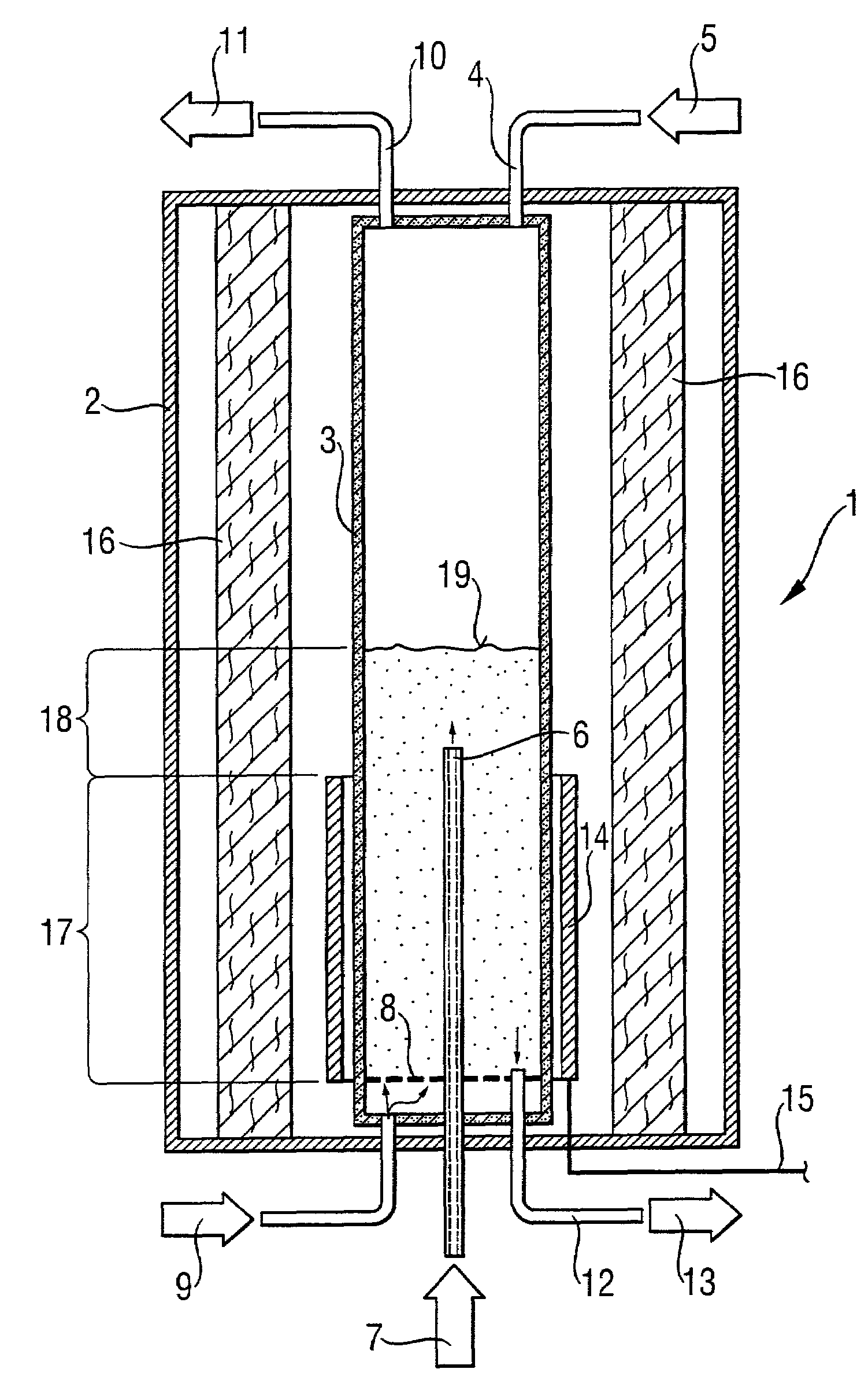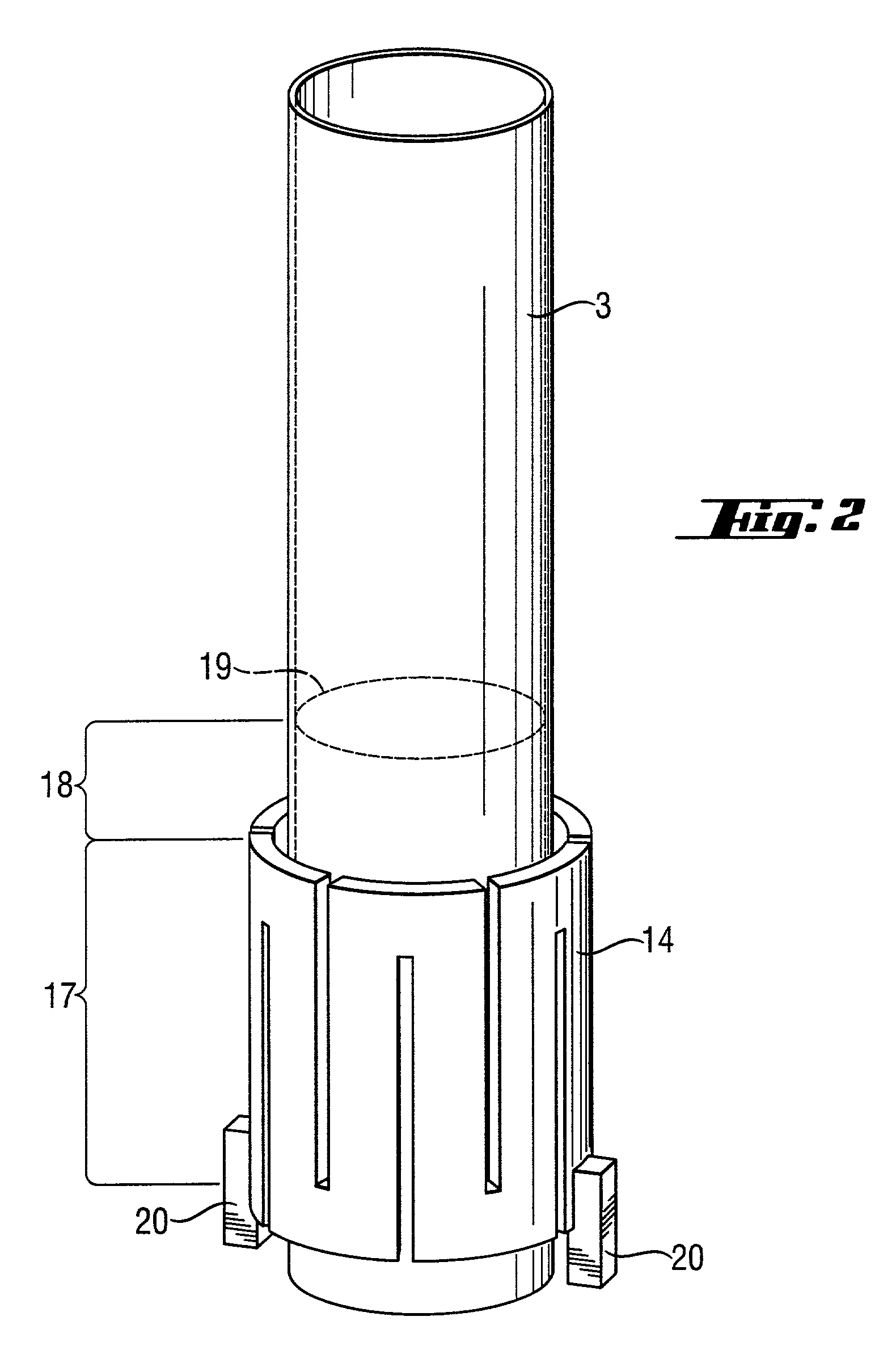Radiation-heated fluidized-bed reactor
a fluidized-bed reactor and radiation-heated technology, applied in the direction of furnaces, lighting and heating apparatus, silicon compounds, etc., can solve the problem that other heating methods than microwave heating were in fact excluded, and achieve the effect of low agglomeration and high purity
- Summary
- Abstract
- Description
- Claims
- Application Information
AI Technical Summary
Benefits of technology
Problems solved by technology
Method used
Image
Examples
invention
EXAMPLES (INVENTION)
[0088]The reactor was rebuilt for the following tests. Instead of the microwave heating, a radiant heater was fitted as the source of thermal radiation. This heater was a tube with meandering slits made from graphite with a SiC surface coating, which surrounded the inner reactor tube in the region of the heating zone without coming into contact with the latter. The radiant heater was supplied with electric power via a controllable voltage source. Its maximum output was 40 kW.
example 1
[0089]The procedure was similar to Comparative Example 1. The starting fill was once again 24 kg.
[0090]The following conditions were established:
[0091]
Fluidizing gas hydrogen13.5 m3 / h (s.t.p.)Fluidizing gas inlet temperature120° C.No reaction gas addedTemperature of the reaction zone:920° C.Pressure in the reaction zone:1250 kPa (absolute)Heating capacity:12.5 kW
[0092]As in Example 1, the fluidized bed was operated for 24 hours at approx. 1.5 times the fluidization velocity unf. The grain size analysis of the particles which were then removed revealed a mean grain diameter of 565 μm. No sintered-together agglomerates were found. The inner side of the reactor tube was completely free of deposits.
example 2
[0093]In this example, it was demonstrated that the process is suitable for the production of high-purity silicon. For this purpose, the arrangement with the radiant heater was used once again. The inner reactor tube was filled with 28 kg of silicon particles, once again with a mean grain size of 550 μm.
[0094]The following conditions were established:
[0095]
Fluidizing gas: hydrogen27 m3 / h (s.t.p.)Reaction gas:Trichlorosilane30 kg / hHydrogen3.6 m3 / h (s.t.p.)Inlet temperature of the gases:120°Temperature of the reaction zone:920° C.Pressure in the reaction zone:1250 kPa (absolute)Net energy demand:37.5 kWAddition of silicon particles (250 μm)0.05 kg / h
[0096]The reactor was operated for 7 days at this setting. Product was removed every half hour, resulting in a mean production rate of 1.27 kg / h. The mean diameter of the product was 780 μm, and the product was free of agglomerates. After the end of the test, the inner side of the reactor tube in the region of the heating zone was completel...
PUM
 Login to View More
Login to View More Abstract
Description
Claims
Application Information
 Login to View More
Login to View More - R&D
- Intellectual Property
- Life Sciences
- Materials
- Tech Scout
- Unparalleled Data Quality
- Higher Quality Content
- 60% Fewer Hallucinations
Browse by: Latest US Patents, China's latest patents, Technical Efficacy Thesaurus, Application Domain, Technology Topic, Popular Technical Reports.
© 2025 PatSnap. All rights reserved.Legal|Privacy policy|Modern Slavery Act Transparency Statement|Sitemap|About US| Contact US: help@patsnap.com



